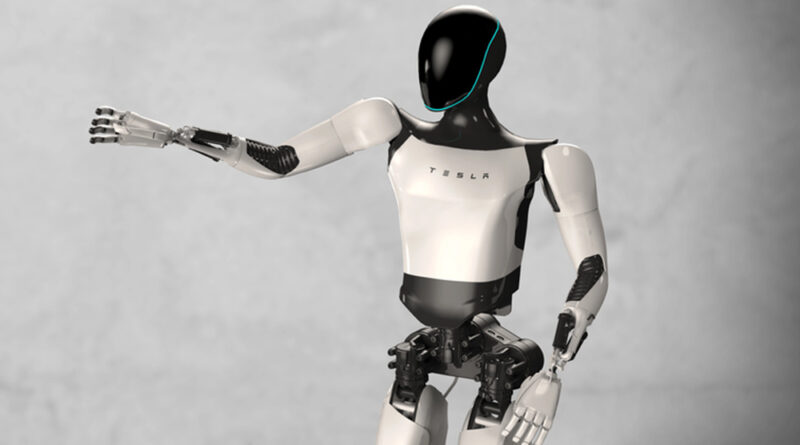Beyond Chatbots: Why NVIDIA and OpenAI Say HUMANOID ROBOTS Could Arrive by 2027
A Sci-Fi Dream Edges Closer to Reality
Jet-black chassis, blinking optics, fully articulated limbs—the humanoids that once stalked science-fiction screens are inching toward factory floors and city streets. According to two of the tech industry’s most prescient CEOs—Jensen Huang of NVIDIA and Sam Altman of OpenAI—that leap from imagination to installation could happen within just two years. “Humanoid robotics is going to potentially be one of the largest industries ever,” Huang told an audience in Paris this week, adding that the “ChatGPT moment for general robotics” is now in sight.
The Visionaries Speak
Huang’s bullishness is matched by Altman’s latest blog post, which predicts that by 2027 robots will be performing “real-world” tasks—and even building more robots. “After the first million units, they will eventually be smart enough to build themselves,” Altman wrote, sketching a feedback loop in which AI agents accelerate their own physical deployment. Both leaders have a history of spotting inflection points early: Huang bet NVIDIA’s future on parallel-processing GPUs decades before deep learning became mainstream, while Altman’s decision to open ChatGPT to the public ignited today’s generative-AI boom.
Why 2027? The Technology Rationale
-
Foundation models for robotics. At March’s GTC conference, NVIDIA unveiled Isaac GR00T N1, the first open foundation model aimed at giving humanoids generalized skills—from grasping to basic reasoning—trained in photorealistic simulation and refined on real-world data.
-
Synthetic worlds at scale. New physics engines let developers stress-test robot bodies in billions of virtual scenarios before touching hardware, compressing years of trial-and-error into weeks.
-
Cost curves. GPU horsepower per dollar has improved roughly 20-fold since 2020; battery density and actuator efficiency are following similar arcs. Add falling sensor prices and a humanoid platform could soon be cost-competitive with a full-time human worker in logistics or manufacturing.
From GPU to GR00T: NVIDIA’s Roadmap
At GTC, conference-goers watched prototype humanoids jump, balance on one leg and manipulate small objects—tasks once considered moon-shots outside the lab. Huang says the “physical functionality is already here”; what’s missing is a smarter control stack, which GR00T and the company’s Omniverse “physical-AI” toolchain aim to deliver. Internally, NVIDIA estimates that a mature humanoid market could mirror the automotive value chain, with chips, sensors and simulation software replacing engines, pistons and wind tunnels. Investors have noticed: the company’s data-center revenue has quadrupled since 2023 on soaring AI demand.
OpenAI’s Self-Replicating Robots Theory
Altman’s forecast is more radical. He envisions robots that learn to manufacture subsequent generations, much as data centers now house servers that design the next AI model. Each leap in model capability feeds back into the physical layer, shrinking iteration cycles from years to months. If that virtuous loop takes hold, the line between software release and robot assembly could blur—drawing comparisons to the self-replicating factories of classic cyber-punk lore.
Market Size: Wall Street’s Catch-Up Moment
Despite the hype, analysts remain conservative. Bernstein projects the one-million-unit milestone for humanoid shipments somewhere between 2030 and 2032, estimating a US $15–20 billion annual market by then. Goldman Sachs is more aggressive, seeing a US $38 billion opportunity by 2035. Those figures could prove low if Huang and Altman’s 2027 horizon holds. Early adopter sectors—warehousing, last-mile delivery, hazardous-environment inspection—already spend billions on specialized automation. Swapping fleets of single-purpose machines for generalist humanoids may offer a faster payback than expected.
Timeline to the First Million Humanoids
| Year | Key Milestone | Lead Player(s) |
|---|---|---|
| 2025 | Release of GR00T N1 foundation model; large-scale synthetic training | NVIDIA |
| 2026 | Pilot projects with sub-US $50 k humanoids in logistics hubs | Multiple start-ups |
| 2027 | Commercial robots that can assemble new units; Altman’s “real-world tasks” threshold | OpenAI ecosystem |
| 2030-32 | Annual shipments pass 1 million; US $15–20 bn market size | Industry-wide |
Risks, Ethics and Regulation
-
Labour displacement. Advanced automation could render certain manual roles obsolete faster than reskilling programmes can keep pace.
-
Safety and liability. Unlike stationary industrial arms, humanoids share human spaces; regulators will need new standards for kinetic force, decision transparency and cyber-security.
-
Concentration of power. If a handful of vendors control both the brains (foundation models) and the bodies (robot platforms), the risk of digital monopolies extends into the physical world.
Preparing for the Two-Year Countdown
Whether you view a robot-rich future as utopia or dystopia, the clock is ticking. For business leaders, that means auditing workflows that hinge on repetitive manual labour. For educators, it means emphasising skills—creativity, complex problem-solving, human care—that machines struggle to replicate. And for policymakers, it means crafting guardrails now, before humanoids roll off assembly lines by the thousands.
Huang and Altman could be wrong—tech timelines often slip. Yet their track records, together with tangible progress in labs and on conference stages, suggest the smart money is on acceleration. In short: forget the chatbots; the real disruption may walk on two legs, and it could knock on the factory door as early as 2027.
Photo Credit: DepositPhotos.com

